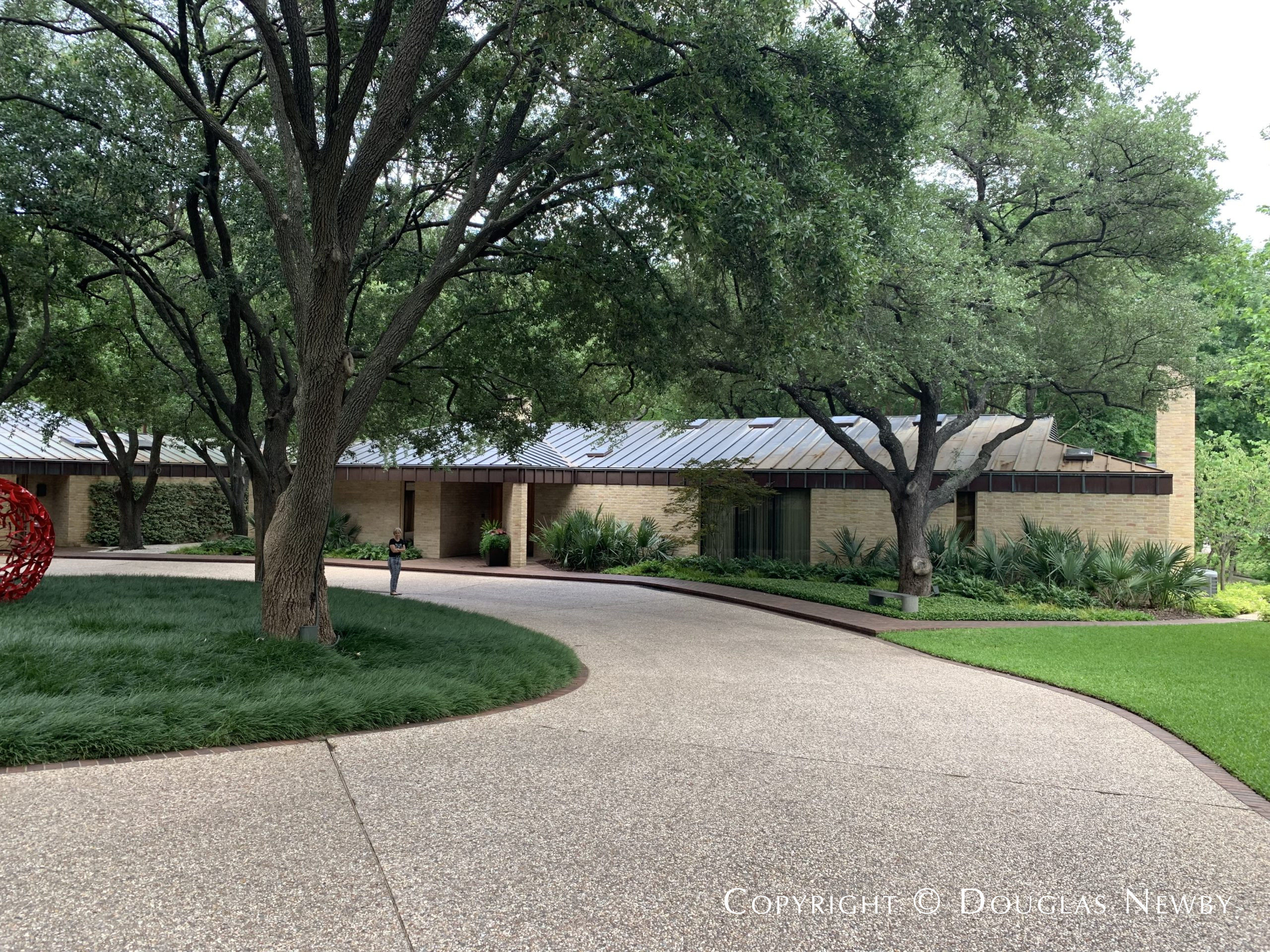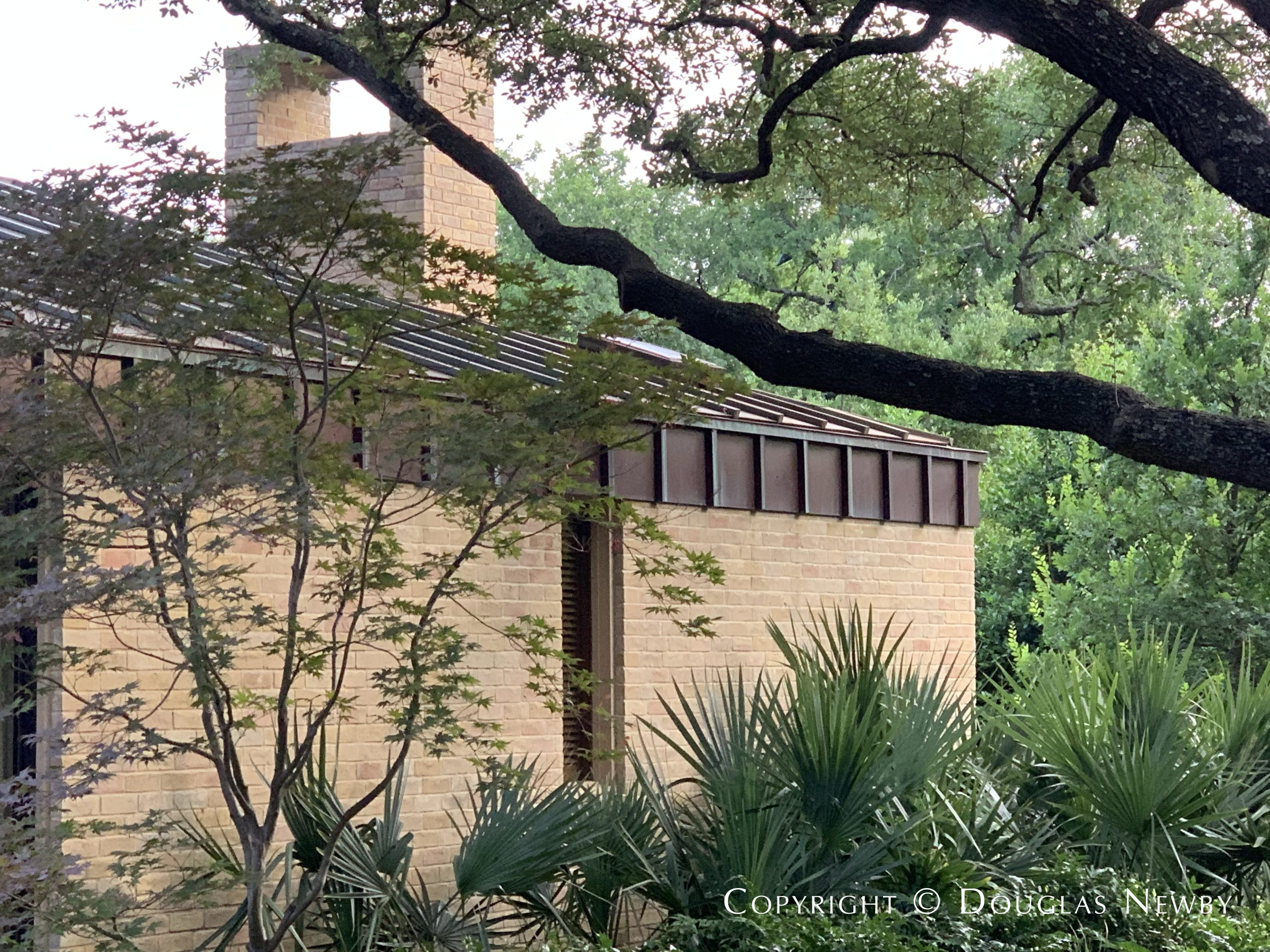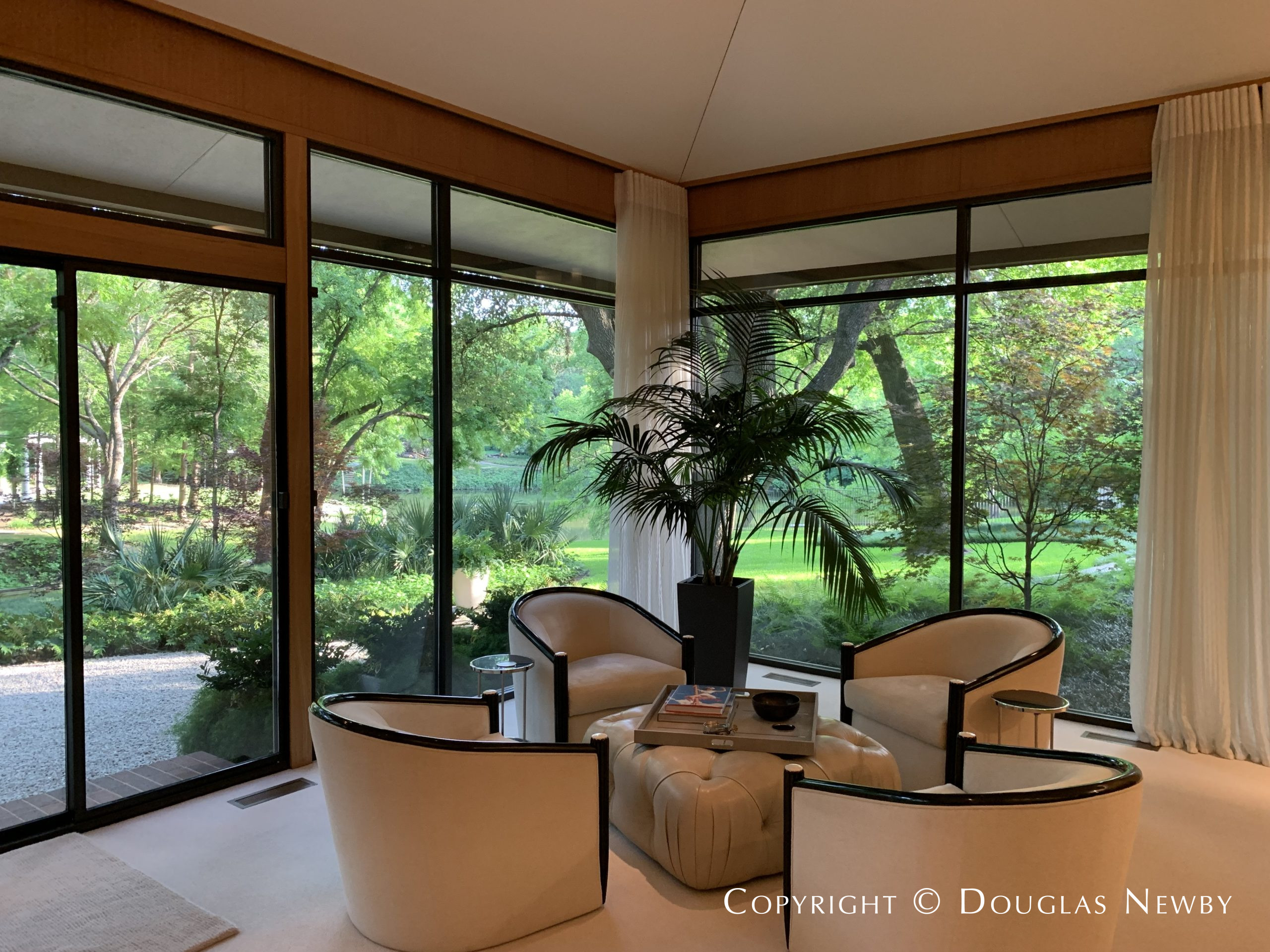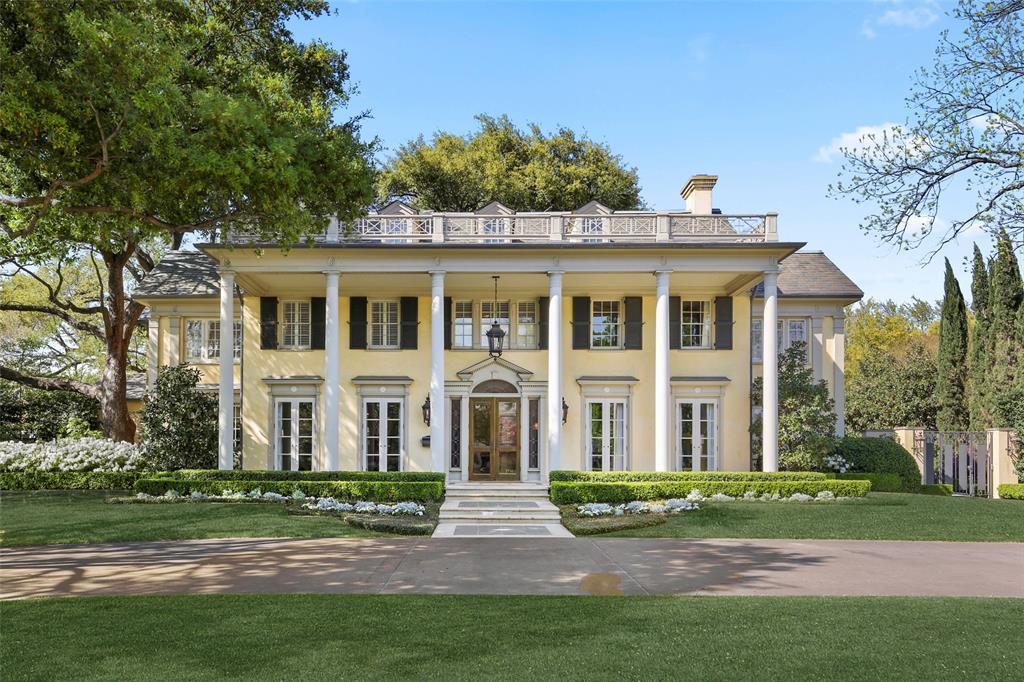
For decades, Highland Park homes have been torn down, however, this year this activity has accelerated . Perhaps new residents have had an impact. For instance, the great influx of home buyers from California to Dallas has created many benefits for Dallas and has exacerbated some problems. The greatest negative effect on our urban landscape is its adding to the acceleration of Highland Park homes in Dallas being torn down. It is not just the raw numbers of people moving to Dallas. Usually, corporate relocations move hundreds of middle level employees and a few executives. During the last two years we have seen corporate relocations, but even more profound is the number of company owners or firm partners who are moving to Dallas but leaving their businesses in New York or California. These are the types of home buyers where money is no obstacle and if they can’t find what they want to live in, they have the resources to buy a home, tear it down and build a new one, adding to the acceleration of Highland Park teardowns.
There is no way to prevent every historic home from being torn down, but we can slow the demise of historically and architecturally significant homes. First, we need to understand why Highland Park Texas, homes are torn down. There are so many reasons Highland Park homes are torn down and many of these reasons we seldom think about. Also, we need to review some of the good reasons Highland Park homes are torn down.
Some Highland Park Homes are Torn Down for Good Reasons
Every decade, as our city and neighborhoods evolve, we can expect some Highland Park homes to be torn down. Some for good reason. Sometimes a Highland Park home is so bad that when it is torn down, we are put out of our architectural visual misery. Some of the homes torn down are not architect-designed homes from the 1920s, but a builder home from the 1970s that had replaced a good home designed 50 years earlier. It is time for some inferior homes to go. Some homes were originally very nice homes that became irrevocably mangled through stylistic renovations and additions. The architecture of the neighborhood improves when these architecturally mangled homes get torn down. Other homes, excruciatingly small, are surrounded and dwarfed by gracious large homes. On occasion, the continuity and architectural flow of the street is compromised by one outlying small house. We have seen examples of inferior or uninspired homes replaced with exceptional homes that add to the rich architectural landscape.
It is Tragic When Exquisite Homes are Torn Down—Especially for No Good Reason
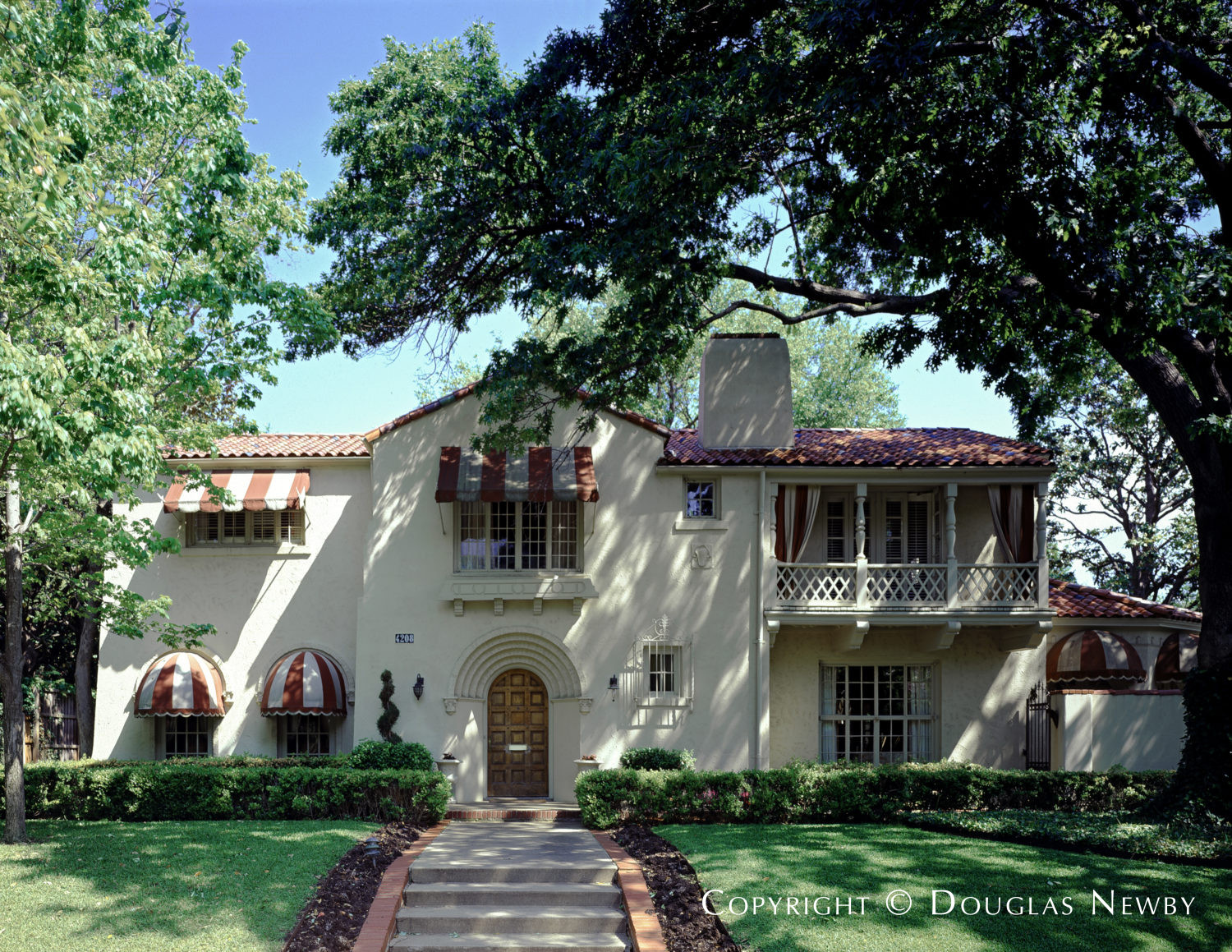
On the other hand, exquisite and timeless homes designed by our best Dallas architects have been torn down for no good economic reason. These architecturally significant and historic homes have been torn down because of a lack of knowledge, lack of preservation advocacy, and teardown pressure from real estate agents, contractors, architects, and even, at times, the Township of Highland Park.
Perfect Storm for Highland Park Homes to be Torn Down
For decades, homebuyers have desired vacant properties on which to build their dream homes. A lot for a new home in an established neighborhood like Highland Park requires another home to be torn down. For many years, this was not a significant problem in Highland Park. Years ago, the homes being torn down were the low-hanging fruit. These were the homes with the least aesthetic and economic value. These insignificant Highland Park homes were rarely missed and their absence was often applauded. Better Highland Park homes often replaced inferior homes and the better homes were not outlandishly larger than the Highland Park homes torn down.
As the years went by, better and better homes became victims of the demand for new homes. It has come to the point that the loss of almost any of the remaining Highland Park homes becomes painful and much more obvious.
Land Goes Up in Value While the Structures on the Land Go Down in Value
The depreciation of a house is not as rapid and dramatic as driving a new car off the car lot, but a new home, not counting the land, goes down in value at a rate of 2‑3% a year. A 5,000 square foot home on a $500,000 lot continues to have much value even if it needs repairs or updating. On the other hand, a 5,000 square foot home needing updates on a $2.5 million lot contributes little to the overall value of the property. For many years, the value of Highland Park lots had become so high that the value of the existing old house structure on one of them was not significant. Because University Park land prices have not been as high as Highland Park land prices, the same structure on a Highland Park lot is worth less per square foot than the value of the same structure on a University Park lot. In other words, houses in University Park, not counting land value, are more expensive per square foot than houses in Highland Park, not counting land value.
Often my recommendation to my clients desiring a home in Highland Park was to buy a Highland Park lot which had the nicest home on it that they could get virtually for free. While these economic conditions create fabulous opportunities for homebuyers, when all the value is in the lot, the homes on them become increasingly vulnerable.
“Homes That Make Us Happy” Create More Demand for Land
I said five years ago in my TEDx Talk, Homes That Make Us Happy, that land and its site would become increasingly important. The pandemic accelerated this prediction. Dallas residents moved from denser neighborhoods and more vibrant neighborhoods to neighborhoods with more land and a calmer environment. Homeowners who desired a larger home desired proportionally more land which precipitated landowners assembling more than one lot for a new home. Now, a new home might require two Highland Park homes to be torn down to obtain the desired land. The multiple parks, beautiful boulevards and tree-lined streets found in Highland Park are like a magnet to those moving from East Coast and West Coast cities that became less desirable for a number of reasons. Despite the high prices in Highland Park, these prices were often modest compared to California prices. In addition, the tax savings that someone moving from Los Angeles would achieve by moving to Texas, would almost pay for a home in Highland Park. The surge of East and West Coast homebuyers created a disruptive demand for land and homes in Highland Park, causing many additional homes to be torn down.
Many of the California homebuyers were accustomed to living in a home on acreage in California. The logical place to find a home with acreage is in the Preston Hollow estate area. However, these California homebuyers found that there might be three dozen applications for one spot at the finest preparatory schools that they were accustomed to. The next best alternative was to move to Highland Park, which has a good public schools, and find a home or build a home on as much land as they could acquire.
Architecturally Significant Preston Hollow Homes are Also Being Torn Down
As a sidenote, there has been far less mention of it, but there have also been many architecturally significant homes in Preston Hollow that have been torn down. A perfect example is a 12,000 square foot Scott Lyons architect-designed home in perfect shape on Gaywood Road in Mayflower Estates. It was torn down because it was on 2-1/2 acres of land adjacent to homes on pretty land. These Preston Hollow Dallas homes that get torn down do not receive the same attention because the homes are spread out and do not have the same 100-year-old mystique of Highland Park.
Big Homes Torn Down Bring More Attention
We notice when big homes are torn down. Large Highland Park homes make a bigger impact than when smaller Highland Park houses are torn down. California buyers, along with Dallas buyers, have an appetite for large lots. Often, the grandest old homes in Highland Park are on the grandest lots. As a result, the largest historic homes in Highland Park have always been the most vulnerable for being torn down. For generations, these grand homes have been admired and enjoyed. It is only natural when one of these architecturally significant homes and sentimental favorites are torn down in Highland Park, there is immediate Highland Park community grief.
California Homebuyers Have No Sentiment for Iconic Highland Park Homes
When someone is raised in Highland Park and every day as a child they play in an architecturally significant home or ride their bike by an architecturally or historically significant home, they develop a real affection for that house. Years later, when it came time for these children in Highland Park to buy a home of their own, they would be more reluctant to tear down a home they always loved. When out-of-town buyers have no sentiment for iconic homes and no prior knowledge of the favorite homes in Highland Park, a large lot underneath the house becomes the sole focus of these buyers.
Real Estate Agents Have Never Had the Financial Incentive to Save a Home When They Can Sell Just the Lot
Real estate agents have never had the financial incentive to sell a home when they can sell just the lot for almost as much money. When selling a lot, an agent only has to tell a buyer the lot dimensions, and the buyer can immediately make a decision and purchase the lot. For an agent to sell the home to a buyer who would renovate it, the agent would have to spend time and resources on marketing the home, arranging financing, inspections and renovation bids. The few percentage points of commission that a real estate agent receives on a higher price for the seller is insignificant when compared to the time and cost of receiving the commission on selling just the lot. However, in contrast to a real estate agent, a seller usually thinks an extra $500,000 to $1 million is a significant amount of money if they can obtain that much more from a homebuyer versus a lot buyer.
Architects Also Have an Incentive for Existing Homes to be Torn Down
Architects also have an incentive to advise a potential homebuyer that it is more cost effective to tear down a house and build a new home. Architects also get to create their own design, which they prefer. New construction design does not have the risks of renovation design and it is more profitable. I have seen even the most sincere preservation architects, when asked to work on a renovation design for an older home, tell their potential client that they can design a new home with the same historic design for less money than renovating and expanding the historic home. I also have seen award-winning architects tell clients they are better off tearing down an architecturally significant period modern home so they can design a new modern home.
Contractors Also Encourage Homes to be Torn Down
Contractors who are hired to renovate a home may start on the project and then a few months into the project convince the homebuyer they are better off to abort the renovation and build a new home. Most builders prefer to build new homes rather than renovate old ones. Building new homes is more profitable and they come with less risk. Builders add additional pressure on homeowners for historic and architecturally significant homes to be torn down.
Highland Park Township Contributes to Homes Being Torn Down
The Township of Highland Park is another culprit when it comes to historic houses being torn down. While the Highland Park town management says they are interested in preserving the existing housing stock, their regulations and construction time limits discourage preservation. To extensively renovate a historically and architecturally significant Highland Park home often takes more than the maximum time limit of two years that a renovation permit allows. The Township of Highland Park levees a $2,000 per day fine on an owner if the architect and contractor cannot complete the project during this time period. Being faithful to the original architecture and sensitive to the compatible renovation design takes talent and time. The onerous building codes, retrofitting requirements, and renovation time limits punish the homeowner and create greater hardships on the builder and architect. It is unfortunate when a conscientious homeowner renovating an architecturally significant home is faced with a bureaucratic entanglement and uncertainty of having to apply for a new building permit or pay a $2,000 per day fine when everyone knows from the beginning that quality renovation will take more than two years on a significant project.
There are many who would like the Township of Highland Park to prohibit homes being torn down. A simpler and more reasonable request would be to ask the Township of Highland Park to make it easier and less onerous to renovate a home in Highland Park.
A Strategy Is Needed to Preserve Highland Park Homes
With these pressures from all directions to tear down Highland Park homes, there needs to be a strategy that is embraced to preserve Highland Park homes. Many Highland Park homes should be saved, can be saved, and should not be torn down. In my next blog article, I will propose a practical strategy that would save Highland Park Texas homes.


